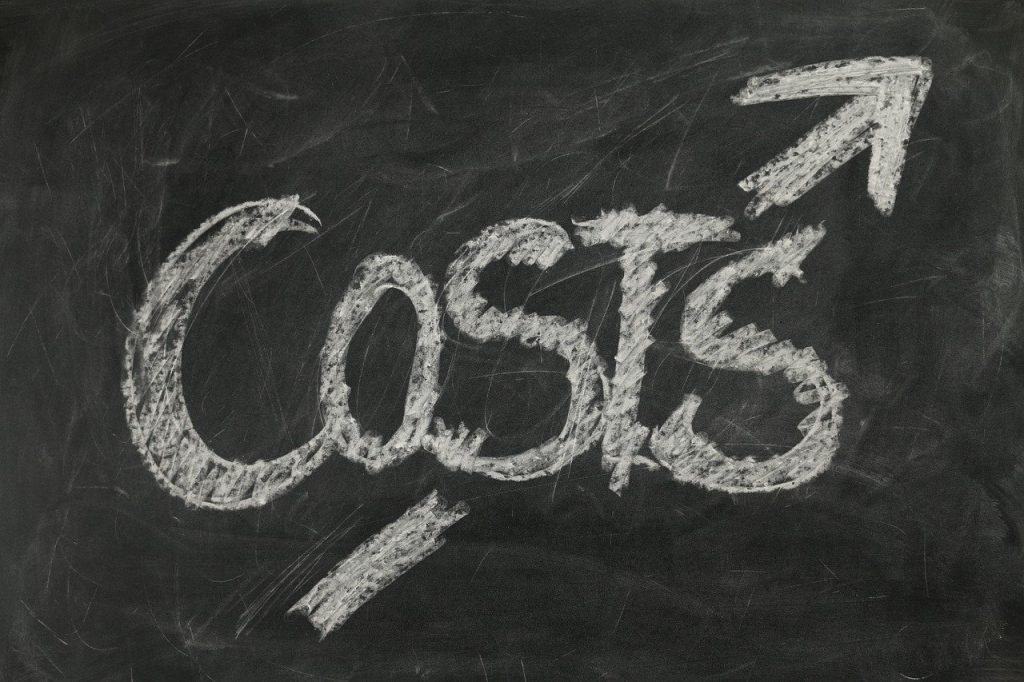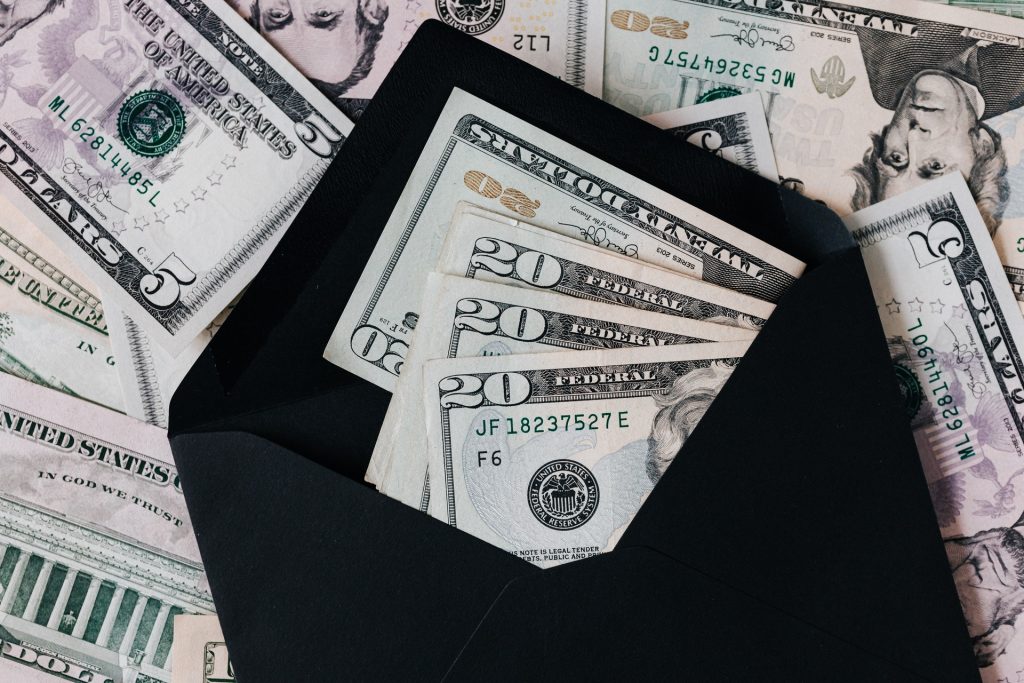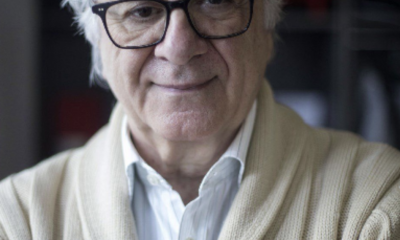Economy
The Alarmingly Uneven Deal of the India-EU FTA
For over four years now, India has been negotiating a Free Trade Agreement (FTA) with the European Union (EU) – the largest trade and investment deal the country has ever embarked on. As much as New Delhi expects to lure the European market and investments closer to India, the actual consequences for the country’s economy could be dire: the open up of public procurement, the deregulation of the banking, automobile, retail and mining industries plus the adverse impact the deal will have in small-scale farmers make of this FTA a counter-productive undertaking.
Europe is India’s major trading partner and biggest –real- source of foreign direct investment (FDI), what gives a flavour of the weight that Brussels carries in the Indian economy. In addition, the EU’s gross domestic product is about ten times larger than India’s. In paper, this asymmetry should present equal opportunities as challenges: a remarkable increase in Indian exports to the enormous European market combined with bigger FDI inflows from the continent, whereas European corporations step up or expand their businesses in India. However, a closer look at the course of the India-EU FTA negotiations reveals a different picture.
Recognizing the significance of exports to keep up with the country’s economic growth, the EU grants India with a preferential import rate, bringing down average EU tariffs on Indian imports to a mere two per cent. With India’s average duties on European products at a much higher 17 per cent, the FTA large removal of trade tariffs will have a greater negative impact on the Indian side. “Preference erosion is a key factor in determining the real economic value -and cost- of a deal with the EU,” points out Shefali Sharma, from the American Institute for Agriculture and Trade Policy.
The upcoming India-EU FTA will also deal with non-tariff barriers (NTB) to trade – a complex set of regulations on imports and investments that in the case of India, protects the country’s market from the might of global corporations. For instance, this FTA is expected to remove a number of limitations on European investments and liberalise the room for manoeuvre of EU firms if national rules are regarded as unfair or discriminatory. An illustrative case is the capacity that European tobacco companies may acquire to sue Indian states if measures to protect public health, such as overbearing tobacco warnings, are perceived as interfering with the multinationals’ investment.
Another long-held fear is the effect that opening up India’s public procurement to European firms may have. Given the size, bargaining power and expertise of EU business when it comes to working in emerging markets, it is plausible that several national players lose their bids in favour of newly-arrived European contesters. As a result, policies initially designed to boost domestic production and consumption as well as to foster Indian small and medium enterprises may well end up weakened. In developing countries, FTAs are infamous for the repercussions they frequently have in public services. Hence, the access of EU firms into the Indian health sector, energy and water supply industries should be carefully monitored.
Nevertheless, Indian officials should be applauded for having negotiated their way to limit the liberalisation of the country’s public procurement to a state level, leaving federal-planned development and infrastructure schemes out of the scope of European firms.
This FTA is likely to bring out a banking deregulation bound to strike large numbers of Indians that, in the last years, have become increasingly dependent on cheap loans to find their way out of poverty. If the Indian financial system is liberalised so that European financial institutions are removed from current restrictions to operate in the country, they will take a greater portion of the Indian banking pie. This will not make good news for poor Indians, given that “unlike their domestic counterparts, foreign banks are not required to open offices in rural areas, provide agricultural loans or to lend to people below the poverty line.” Certainly, it would add up to the pressures faced by domestic banks in more profitable urban operations, displacing resources to better compete in those threatened areas.
If New Delhi proves unable to keep the automobile sector away from the FTA, it may easily turn out to be the worse damaged industry of the whole agreement. Because of the high duties that fully-assembled cars have to pay if directly imported into the Indian market, today most EU carmakers partially manufacture their cars in India. If this trade deal removes those levies altogether along with other existing NTBs, EU automakers will have no incentive to put together their vehicles in India, and would rather ship them in from somewhere else. The price of these automobiles will then go down, undermining the competitiveness of local carmakers. Most European cars sold in India are luxury vehicles, so in order to prevent a major blow to the Indian automobile industry, it is hoped that “the abolition of tariffs [will presumably only apply] on high-end, luxury cars, while small and medium car makers retain a degree of protection,” said Pallavi Aiyar, Brussels correspondent for the Business Standard.
Along with the car industry, duties for European alcoholic beverages are proving to be one of the FTA’s trickiest items to work out. India’s flourishing, vast middle class makes a very attractive market for European spirits and wine multinationals. With a current tariff of more than 70 per cent, lowering duties for EU alcoholic beverages will considerably toughen competition on the business. In fact, neither the automobile industry nor the spirits and wine markets form part of any of India’s FTAs.
Distressing the Indian countryside
The possible FTA-triggered influx of cheap, heavily subsidised European agricultural products right into the Indian market should worry Indian farmers. Brussels allocates near 40 per cent of its entire budget to endow EU farmers, creating a large surplus of low-priced fruits and vegetables ready to export. It seems inevitable that, if tariffs are reduced or completely lifted, dumping will displace large chunks of Indian agricultural products from the country’s markets, hardening the lives of many small scale and subsistence farmers.
On the top of this, if the India-EU FTA ends up fully protecting the intellectual property rights of European agribusiness, these very farmers may see the price of seeds, the bloodstream of their livelihood, substantially going up. As Shefali Sharm says, “the EU advocates for a system of plant variety protection that favours plant breeder’s over farmers rights to seeds.”
Indian negotiators should prevent this trade pact from distressing the living conditions of millions of rural dwellers in India- just like members of the European Parliament (EP) have been doing to protect EU farmers. In a resolution issued in May, the EP called to shield European farming businesses by taking into account “any negative impact on European agriculture, particularly in opening up of markets, GMOs, milk, beef, intellectual property protection and origin labelling.”
Moreover, the powerful European agricultural lobby is pressing EU negotiators to not include certain products in the liberalisation bill, fearing that Indian exports will distort the EU market of certain commodities. A good example is the claim made by Cope-Cogeca – the main farmer lobby in Europe- that the EU should not incorporate rice in the FTA “due to the extreme market volatility for this product and erratic behaviour of India in imposing export bans.”
The mining industry is another sector prompting European investors to rub their hands. As the FTA liberalises the investment regime, European multinationals will be allowed to ship larger quantities of minerals out of India. A profitable business that will multiply mining concessions and therefore, revenue collecting in mineral-rich but poverty-stricken Indian states. That will augment these Indian states’ coffers, though adivasis and other marginalised communities may not welcome with such enthusiasm those European companies. “Deregulating investments in natural resources could displace people from their habitat and sources of livelihood. Furthermore, the misuse of raw materials would exacerbate ongoing struggles against land grabbing,” told Dharmendra Kumar, director of India FDI Watch, to this author.
Grey clouds over the retail sector
In order to contain foreign corporations from dominating large sections of India’s retail, investments of global multinationals in the country’s multi-brand retail are today partially restrained. If, as it has been discussed, the prospective India-EU FTA eliminates such constraints, European giant retailers such a Carrefour, Tesco or Metro Group will size a rather larger part of the Indian retail market, severely hurting the massive, unorganized sector of the Indian economy.
The unattainable standards -not necessarily in quality, but in appearance- of products sold in those supermarket chains may impede local suppliers to work with European outlets. Even if farmers are able to meet the newly-introduced requirements, it is not unusual that, once small-scale producers rely on big buyers to sell their products, wholesale retailers cut down prices, engulfing farmers in a trap that leads to “massive job and livelihood losses,” as a letter of leftist members of the EP put it recently.
In the cases where large outlets do not engage in such practice, farmers, small shop owners and street vendors are anyways likely to get hit by the increase of more competitive products on offer at the supermarkets’ shelves.
The exposure that this FTA will cause to India’s informal sector and small farmers is even recognised in a study carried out by the European Economic and Social Committee, an EU’s advisory body. The report claims that the current course of negotiations fails to “assess the likely economic and social risks of the FTA on Indian society.” In a country where, according to the United Nations Development Programme, “more than 90 per cent of the working population is in the informal sector,” such type of findings should be taken seriously.
Not all about bad news
One of the main bones of contention to conclude this FTA is the negative of Brussels to relax working and residence permits for skilled Indians. If New Delhi’s negotiators are eventually capable to persuade their European counterparts, the agreement will not only loosen up existing requirements for Indians professionals to work in the EU, but could also ease the EU criteria to recognise qualifications. Coupled with the liberalisation of legal services that this pact will bring about, banking, accounting and IT experts may want to keep an eye on the opportunities that this FTA might deliver.
Even if the EU is under fire for its unrestrained defence of corporative interests, Brussels should be credited for trying to safeguard Indians from the worse effects of the European multinationals expansion in the country. The India-EU FTA should “ensure that investors respect core International Labour Organization standards [with an emphasis on child labour], social and environmental governance, and international agreements so as to ensure a balance between economic growth and higher social and environmental standards,” stated the EP in a resolution in 2009.
A tough one to swallow
It is far from certain that the great lost of tariff revenues that this FTA will cause to the Government of India –being the EU India’s larger trade partner- will be compensated by a theoretical surge of FDI from and exports to the European market. “Undoubtedly, this [trade agreement] will have serious implications for government spending in social sectors,” asserted to this author Dharmendra Kumar.
Even though the India-EU FTA is expected to more than double the bilateral trade to EUR 160 bn by 2015, two leading European think tanks estimate that EU exports to India will increase by 56.8 per cent, while India’s to the EU will do a mere 18.7 per cent.
Since the outset of these FTA talks, business interests have been driving the negotiations, while areas like sustainable development and poverty reduction have been neglected. It does not imply though that New Delhi cannot strike vital conquests in some of these social areas, as the data exclusivity exclusion in medicines research proves – allowing generics to be produced when it is in the benefit of the public health.
This FTA runs the risk of hurting millions of Indian families who rely on vulnerable jobs to barely make ends meet. The agreement is widely assumed to be concluded at the end of the year, so there is still some room to better protect these livelihoods. Time is running out to make of the India-EU FTA signing something to celebrate instead of something to bemoan.
Javier Delgado Rivera is a Brussels-based freelance research-journalist with a focus on the European Union (EU) ties with Asia. You can check out his stories at www.euasiaintelligence.com & follow him on twitter at @EUAsiaIntel
Please share and join the discussion on facebook by clicking the “Like” below.
Economy
Protecting Your Business From Rising Fuel Costs

The cost of fuel is soaring globally, due to various factors, including the coronavirus pandemic and the ongoing conflict in Ukraine.
Businesses everywhere are feeling the burden that comes with increased energy costs. However, there are a number of things that experts have determined companies can do to fight back and protect their businesses from rising fuel costs.
Implement green measures
Dusistainbility has been a big trend in global business in recent years. Companies that have not yet embraced measures such as the paperless office and the use of solar power, many find that doing so now could help to offset some of the extra costs arising due to higher gas, oil, and electricity prices.
A four-day week
The benefits of a four-day week for employers and their employees have long been debated, but there is a lot of evidence to suggest that companies can be run just as efficiently in four days as they can in five. This could give companies struggling with the cost of heating, and lighting their offices, or running their machinery the opportunity they need to protect their business from fuel costs without losing money.
Should a factory, for example, close for one extra day per week, they would save 20 percent of its operating costs, and studies have shown that employees who work four days a week are around 20 percent more productive, which means they could save a great deal on the ongoing cost of fuel, without ruining their productivity or losing revenue. Many experts believe this to be a win-win situation.
Special offers
Of course, when the price of fuel rises, in certain industries, customers may be affected by those costs, and therefore less likely to make the same level of purchases they once did. Companies who find themselves in this position need to do whatever they can to encourage customers to buy.
For example, Volvo Penta, which sell luxury yacht and marine engines, among other applications, may find that due to the cost of fueling a vessel, fewer people are going out o their boats, causing sales to drop. By making special offers or putting together attractive packages, they can encourage more purchases to be made. If the product is good, and the price is right, it is easier to weather this particular storm.
Downsizing
Now that remote working is easier than ever, downsizing office space is set to be another important way that companies around the world can protect themselves from the rising cost of fuel. The fewer employees who need to be in the office or onsite, the smaller the office space can be, and the fewer resources will be required to keep it running smoothly, so expect to see more homeworking going forward.
The cost of fuel may be set to rise even further in the Autumn, and no one knows exactly what will happen beyond that, but there are a number of things businesses can do in mitigation, so it is almost certainly not time to panic yet.
Economy
Joao Vale e Azevedo: pessimistic prospects could be tackled by collectivity

As we enter the new year, the effects of 2021 are now echoing in the economy in 2022. According to the World Bank’s latest Global Economic Prospects report, global growth is expected to decelerate markedly from 5.5 in 2021 to 4.1 in 2002 and 3.2 percent in 2023. This has been proposed both in the case of developing and major economies, such as the case of the United States.
In 2021, governments around the world have suggested that it was a year of rebirth. However, current numbers are not showing that and so not everyone is trusting on this bet. This is the case of Joao Vale e Azevedo, chairman of KUNST Global – an equity firm based in London, Geneva, Zurich and Luxembourg. For him, the forecast is still negative for 2022 as inflation keeps on running critically in the US and in many European countries. But unlike in the 1970s and 1980s, the solution won’t lie in governments printing money like they did in the past.
The chairman of KUNST Global also doesn’t think that the so-called commodity crisis is temporary as the news might say. In fact, Azevedo believes that there is more to it than the effects of the pandemic. While the Covid-19 crisis has ignited the growth of e-commerce, Azevedo claims that this intensification in demand for goods would happen anyway and the problem is actually in the distribution industry: “It is unable to meet this increased demand. There is no labor, no trucks, nor ships. The offer is no longer able to meet the market demand and this is not a contingency, it is a physiological fact.”
Finally, the third and possibly the most concerning problem is the price of energy. “This is really a worrying question, and not only for our distant future, as it has been up to now, but also for our present,” explains Azevedo. “We are witnessing it on a daily basis: electricity and gas bills have skyrocketed. Families and companies, which were already suffering from the pandemic, do not know how to cope with the increases.”
Although propositions like moving from coal to gas or from oil to electricity may point the way out, Azevedo thinks we are completely deprived of the infrastructure and funds necessary to manage this change. What is more, the chairman of KUNST Global argues that present politics lacks long-term vision, which means politicians are often too focused on electoral cycles instead of considering the future – thus mining any possibility of investments for change.
In addition to that, Azevedo has been keeping a close eye on the war in Ukraine. In his opinion, if Russia persists in carrying on the war, not only this country will be doomed to bankruptcy, but the whole West could face a domino effect. “Regardless of this, the war in Ukraine means greater market instability, rising energy prices that are already out of control, and a further increase in inflation, which could reach double the current levels,” he adds.
However, not all hope is lost. Hopefully, the war in Ukraine will find a rapid resolution, which is something that could catalyze even more this sense of collectivity that Joao Vale e Azevedo sees growing after two years of pandemic. “The fact that we have had fewer opportunities for interaction has meant that we are now more aware of the value of those interactions, and probably also of human life. We are a stronger community. The challenges that await us are very difficult, but together we are much better prepared to face them,” he concludes.
Economy
How People Around The World Are Investing Their Money

One thing that everyone should aim to do with their spare cash is to invest it – as wisely as possible, but at least in a way which is going to lead to potentially high returns. If done correctly and with a bit of good fortune, it is perfectly easy to improve one’s wealth to a considerable degree this way, and it is therefore well worth people considering this.
As it happens, there are a lot of investment options that people are making use of all over the world, with some that are especially popular right now. Let’s take a look in some detail at some of the major ways in which people are investing their money – and making some considerable gains, in many cases.
Stocks & Shares
Arguably one of the most popular forms of investment is stocks and shares – which can be incredibly lucrative if it is done in the right way, and with the right set of circumstances behind an investment. Indeed, stocks and shares remain the number one investment that people are engaging in every day throughout the world, and with good reason. Not only is it potentially something that can bring considerable returns, it is also relatively straightforward to get into and learn at least the basics of, making it a very simple and easy form of investment for most people.
It also doesn’t require a huge amount of money to get going – although having that is obviously not going to hurt one’s chances of success starting out! In fact, it’s doable to get going with stocks and shares with literally a few spare pennies – so it really is something that pretty much anyone can get into and make use of. It can also be a good way to diversify and widen out a portfolio that may include other forms of investment as well.
Savings Accounts
Although many people think of investment and savings as two different things, they are really just two sides of the same coin. You can think of saving as a form of investment, especially if it is done in the right manner and with the right approach. Of course, in order to find success with this, it is important to make sure that you are choosing the best savings account there is. That means one that has a high enough interest rate for it to be worth it, as well as having other functions that might be important to an individual – such as the ability to take money out whenever you need to, for instance.
With interest rates diving all over the world, this is quickly becoming one of the less popular forms of investment – but for now it is still worth considering, as it can be a good way to at least store your spare cash as necessary. If nothing else, you’ll probably find that you are able to find yourself in a much better financial position this way soon enough, even if that doesn’t happen as quickly as it might with certain other investments.
Cryptocurrencies
Although there is some controversy around cryptocurrencies, there is no doubt that it is one of the world’s most popular forms of investment right now. There is also no doubt that it’s possible to make a lot of money this way – as some of the world’s richest people have done so already. Even in a much lesser sense, however, it is perfectly possible for an individual with a regular amount of wealth to make money investing in cryptocurrencies. And generally, this is done in a few key ways.
First of all, you can simply buy some crypto and then hold on to it, hoping for its value to improve and selling it on once it has done so. Alternatively, you might want to consider trading crypto coins by buying one kind and then trading into another as you think it might be lucrative. This takes a bit more knowledge, patience and skill, but the returns can be significant. Either of these can work very well, however, and they are worth thinking about at the very least.
A related form of investment, in that it too relies upon blockchain technology, is NFTs. These pieces of art can be bought and traded as above, and some of them are creating huge amounts of money for people right now, so it might well be worth getting into.
Spread Betting
Another form of investment that a lot of people are getting into in the past few years is something known as spread betting. This is where you place bets on a variety of outcomes on a particular event, whether it’s a sport, a political event or whatever else it might be. With the right bet and the right outcome, this can be a really effective way to make some money, and it is best done with the attitude of it being an investment rather than a bet – as this helps in keeping things a little more sensible.
To make the right decisions, it is helpful to be patient and work out what kinds of results are likely to occur, and to find them at a good price. Searching for NHL picks and horse racing tips is a good place to start for that. However it might be done, with care and attention this can prove to be a decent way to invest some spare money, so it is definitely something to think about.
Bonds
If you are particularly keen for a very safe form of investment, it is well worth looking into bonds. Bonds are something like a savings account, but with an important difference that needs to be understood well in order to make good use of them. Essentially, you buy a bond and you will be paid back your initial investment, plus any interest that may have accrued along the way too. They are very low-risk and yet can bring you a lot of money over the long-term, so they are worth looking into for pretty much anyone looking to make a little money on the side.
Bear in mind that you won’t be able to access the money during the fixed rate period, so you should only invest whatever you don’t need to have immediate access to. However, they offer higher interest rates than your average savings account, so it can be worth it.
Precious Metals
Another form of investment that many people around the world are investing in right now is precious metals. In truth, these are always popular, and it’s not too hard to appreciate why. After all, precious metals will generally always retain their value even when everything else in the world is going through turmoil. That is especially true of gold, which still holds the standard that the global economy works by – with the exception of cryptocurrency.
As you can see, precious metals are almost certainly worth considering at the very least if you want to invest your money wisely. But make sure that you are only putting what you can afford to lose into this investment, like any other. Although it is not the highest-risk investment, it is not zero-risk either.
Those are just some of the most popular investments around the world that people are making good use of right now. Any of these could be lucrative and useful for you, so take a look at them in turn and see whether any of them are suitable for your needs and purposes. You might be surprised at how effective they can be.
-

 Business10 months ago
Business10 months agoHow To Future-Proof Your Business With The Right Tools
-

 Travel8 months ago
Travel8 months agoTravelling from San Antonio to Guadalajara
-

 Business11 months ago
Business11 months agoWhat are EDC products, and why should you always have them?
-

 Travel5 months ago
Travel5 months agoTravel wellness tips for a healthier and more enjoyable journey
-

 Europe4 months ago
Europe4 months agoRecent Books by Boaventura de Sousa Santos: Law, Colonialism, and the Future of Europe

